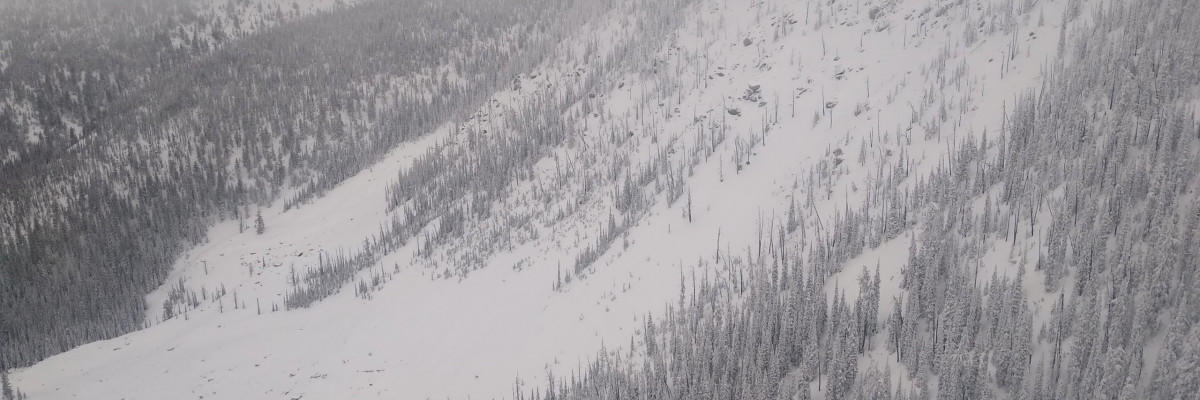The avalanche danger for the west central Montana backcountry is Considerable. Dangerous avalanche conditions in the mountains exist and travel in avalanche terrain is not recommended. Good morning, this is Todd Glew with the West Central Montana Avalanche Center’s avalanche advisory for January 8, 2019. This danger rating does not apply to operating ski areas, expires at midnight tonight, and is the sole responsibility of the U.S. Forest Service.
Weather and Snowpack
Mountain temperatures are in the low 20’s with increasing strong winds out of the WSW. USGS Snotel sites report from .3 to 1 inch of snow water equivalent SWE In the past 24 hours. This could translate to up to 12″ of snow in the heavier hit areas such as the southern Missions and Swan and 4″ in the lighter areas yesterday. Up to a couple of inches came in overnight throughout the forecast area.
Yesterday there was a fatal avalanche at Silver Mountain Ski Resort, a close neighbor to us in Kellogg, Idaho. Our deepest condolences go out to the avalanche victims and their friends and family. We have now had two separate avalanche accidents during the past week in and around our forecast area, totaling 4 deaths. The mountains are screaming at us to stay out of avalanche terrain.
Before the New Year there was barely enough snow to ski or sled. On New Year’s Eve, it began snowing and has not stopped. We have received over 7 inches of Snow Water Equivalent (SWE) in some locations, which translates to 2-4 feet of heavy snow. This is a ton of weight, stressing multiple weak layers buried in our snowpack, primed for a deadly avalanche. Sometimes you cannot ski or ride in avalanche terrain, right now is that time.
Our primary avalanche concern is persistent slab avalanches. There are two distinct buried weak layers in our snowpack capable of producing avalanches. The first is a surface hoar, crust, near-surface facet combo buried about 2-4 feet deep, and the second is weak sugary depth hoar and facets near the ground. Both of these layers have produced numerous natural and human triggered avalanches over the past week and will continue to do so.
Our secondary avalanche concern is wind slab avalanches. It is forecasted to be windy and snowing today, creating wind slabs in leeward terrain. Wind slabs can be easily identified by looking for bulbous and pillowy features located on the leeward side of ridges or in cross-loaded terrain. Remember, even a small wind slab can step down and create a deadly persistent slab avalanche.
Bottom line: If you are going out in the mountains today, stay out of and well away from avalanche terrain. Stay off of and far away from slopes approaching 30 degrees in steepness, as avalanches can be remotely triggered. Also, make sure you and all of your partners have a beacon, probe, shovel, and know how to use them. The kicker is that if you need to use this gear to dig out your partner, it will most likely be a body recovery.
Avalanche and Weather Outlook
Increasing WSW winds with gusts to 66mph are expected today. Average wind speeds are forecasted to be 20-30 mph with wind chill values below 0. 2-7 inches of snow are expected today with a few more inches tonight.
The avalanche danger will rise with new snow and more wind. Pay attention to red flags such as cracking, collapsing, wind transported snow, and recent avalanches.
Any and all observations are greatly appreciated. If you get out in the mountains please send us information here. Thank you very much to those of you who have been sending in observations as it is very helpful.
Ski and ride safe.














